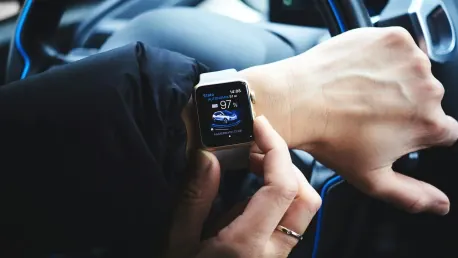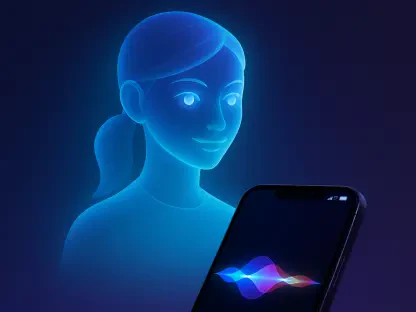Emerging technologies are dramatically changing the landscape of personal injury law by improving the way cases are prepared and presented. The legal profession is increasingly utilizing artificial intelligence (AI), wearable technology, and virtual reality (VR) to enhance both the efficiency and accuracy of legal proceedings. These innovations are setting new benchmarks for the practice of personal injury litigation, reshaping the methods lawyers use to secure justice for their clients.
The Digital Transformation of Personal Injury Law
The legal industry has consistently embraced new technologies, but the recent influx of advancements has had an unprecedented impact, especially in the realm of personal injury law. Artificial intelligence, when employed in legal research and predictive analytics, allows attorneys to process cases more quickly while maintaining a high level of precision. Automation tools further streamline the complex case preparation process, thereby saving valuable time and improving the meticulousness of case assessments.
Additionally, the integration of wearable devices and virtual reality is revolutionizing how evidence is gathered and presented in court. Wearable technology, such as smartwatches and fitness trackers, captures real-time health data and bolsters injury claims with concrete evidence. Meanwhile, VR and 3D reconstructions produce compelling visual presentations for judges and juries, making the evidence more tangible and understandable. These technological tools are collectively reshaping the procedures and outcomes of personal injury litigation, ensuring fair settlements and justice for clients.
AI in Case Preparation and Legal Research
Artificial intelligence is transforming the preparatory phase of personal injury cases. Historically, lawyers had to dedicate extensive hours to combing through a vast collection of case files, court rulings, and legal precedents. Today, AI-driven platforms can process substantial datasets within minutes, pinpointing relevant case laws and predicting potential legal strategies. Such efficiency not only benefits attorneys but also ensures a more thorough and accurate case assessment.
Machine learning algorithms have become crucial in evaluating the likelihood of case success. By analyzing historical data from past settlements and court rulings, these algorithms can predict compensation amounts, assisting lawyers in devising more effective legal strategies. This predictive capability sets realistic expectations for clients, allowing them to make informed decisions about their cases. Consequently, the enhanced case preparation powered by AI translates to improved client satisfaction and potentially more favorable outcomes in personal injury litigation.
Wearables as Evidence in Personal Injury Cases
The advent of wearable technology has introduced a novel form of digital evidence in personal injury cases. Devices like smartwatches and fitness trackers collect health data that can be pivotal in substantiating injury claims. For instance, data from a fitness tracker can illustrate a marked decline in a victim’s mobility post-injury, which can be used to validate the need for compensation.
Furthermore, wearables play a crucial role in refuting baseless claims from insurance companies, ensuring accurate and fair settlements. The GPS capabilities of these devices provide location data that can confirm a victim’s movements at the time of an accident. This information can be crucial for establishing liability in vehicular or workplace incidents. The objective data gleaned from wearables fortifies the evidence presented, reinforcing the credibility of the injury claims and contributing to just outcomes.
Virtual Reality and 3D Reconstructions in Courtrooms
Virtual reality and 3D reconstructions are enhancing courtroom presentations by offering immersive and dynamic visualizations of evidence. Lawyers can leverage this technology to create detailed accident reconstructions, which judges and juries can virtually experience. This immersive presentation adds a new dimension to traditional evidence, helping to convey the nuances and complexities of an incident more effectively.
For example, in car accident cases, a 3D reconstruction can illustrate the exact impact of factors such as speed, road conditions, and driver behavior. This detailed visualization enables the court to comprehend the sequence of events leading to the accident, which is crucial for determining fault and liability. The use of VR and 3D reconstructions not only clarifies the evidence but also engages the court, making it easier for all parties involved to understand and assess the case’s merits.
Virtual Trials and Remote Legal Consultations
The shift toward virtual trials and remote legal consultations was expedited by the COVID-19 pandemic, bringing lasting benefits for both lawyers and clients. Many courts have since adopted video conferencing for hearings, significantly reducing the need for physical appearances and minimizing delays. This move toward virtual proceedings enhances accessibility and convenience, particularly for clients who are recovering from severe injuries and may find it difficult to attend in-person meetings.
Digital case management platforms facilitate seamless communication between attorneys and clients, ensuring that updates, documents, and strategies are easily accessible. This level of convenience democratizes access to legal services, allowing individuals with limited resources or health constraints to seek expert legal counsel from their homes. Remote consultations thus empower clients to pursue justice without the barriers of logistical or physical challenges, extending the reach of legal services to a broader clientele.
Future Directions and Implications
Emerging technologies are significantly transforming the personal injury law landscape by enhancing the preparation and presentation of cases. The legal field is more and more incorporating innovations such as artificial intelligence (AI), wearable technology, and virtual reality (VR) to boost both the efficiency and accuracy of legal proceedings. Lawyers can now analyze vast amounts of data more quickly and accurately with AI. Wearable tech provides real-time data that can be crucial in proving the extent of injuries or the impact of an accident. Additionally, VR offers immersive simulations that help juries better understand complex scenarios, making it easier for them to grasp the evidence presented. These advancements are setting new standards and redefining how personal injury litigation is practiced. They ultimately reshape how lawyers strive to secure justice for their clients, ensuring more precise and informed decisions in the courtroom.









